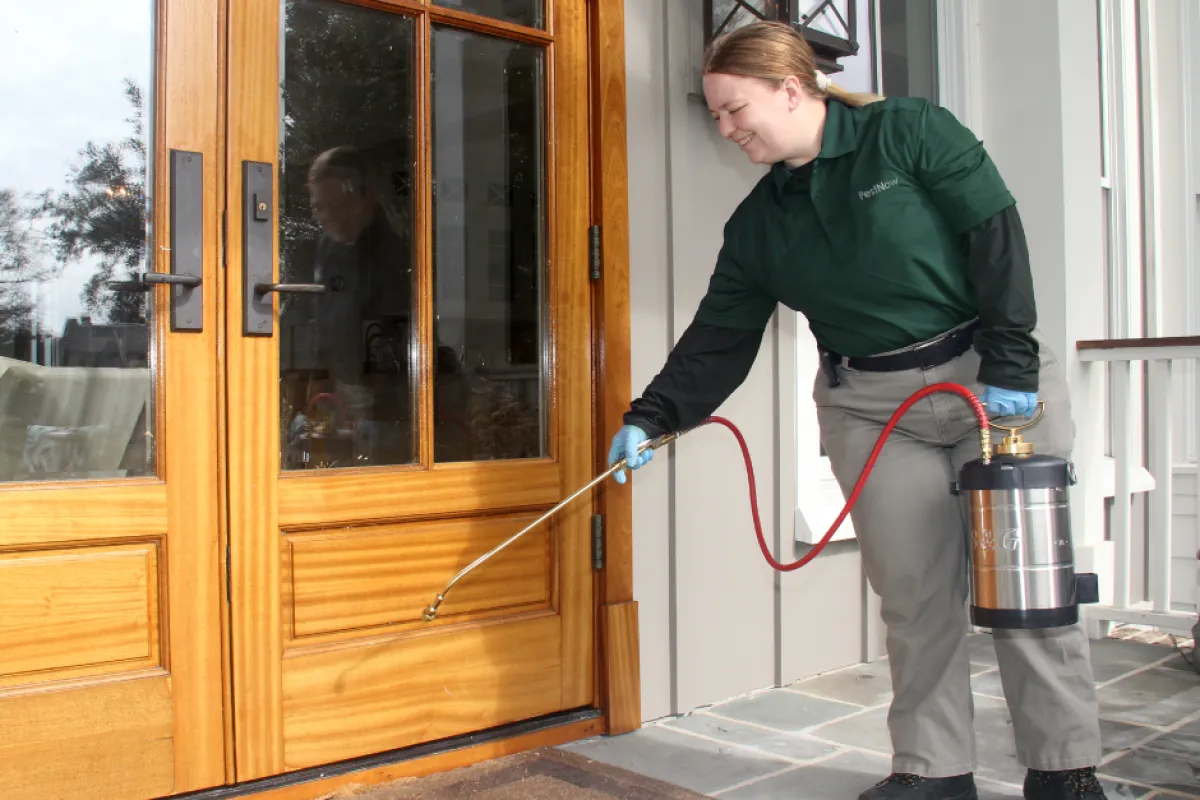Top Quality A1 Pest Control Services Charlotte - Shield Your Home
Top Quality A1 Pest Control Services Charlotte - Shield Your Home
Blog Article
Bed Pest Treatment Failure: Contrasting Chemical Vs. Non-Chemical Solutions
In the realm of pest control, especially when handling the consistent problem of bed pests, the choice between chemical and non-chemical therapy services can be a crucial one. Both methods supply distinct advantages and disadvantages, affecting variables such as effectiveness, security considerations, and total cost. By taking a look at the nuanced information of each technique, a more clear understanding of which path to pursue in attending to a bed pest infestation can be achieved.
Performance of Chemical Therapies
Chemical therapies for bed insect infestations have been widely acknowledged for their potent and fast effectiveness in getting rid of these insects. When considering the effectiveness of chemical treatments, it is vital to comprehend that they can offer a quick and extensive remedy to a bed pest issue. Expert exterminators frequently count on pesticides to target bed insects at different stages of their life cycle, including eggs, adults, and fairies. These chemicals generally work by interrupting the bed bugs' nerve system, bring about paralysis and ultimate death.
Moreover, chemical therapies have the advantage of using residual results, suggesting that they can proceed to eliminate bed pests also after the first application. This residual action is specifically useful in combating any possible re-infestations. Furthermore, the quick activity of chemical therapies can bring relief to people facing extreme bed insect infestations, permitting them to regain control of their living rooms quickly.
Security Worry About Chemical Solutions
When utilizing chemical services for bed bug treatment is ensuring the safety and security of owners and the environment,One important facet that requires careful consideration. While chemical treatments can be effective in eliminating bed pests, they might posture threats otherwise taken care of correctly. One of the primary safety concerns with chemical services is the prospective damage they can trigger to human health. Direct exposure to certain chemicals made use of in bed insect treatments can result in respiratory system concerns, skin irritability, or various other unfavorable reactions, especially in individuals with pre-existing problems or level of sensitivities. Furthermore, incorrect application or dose of chemical pesticides can cause poisonous deposits remaining in the treated area, presenting long-lasting health and wellness dangers to residents.
In addition, the ecological impact of chemical remedies is one more substantial factor to consider. Some pesticides made use of in bed bug therapies might be harmful to valuable bugs, wild animals, and communities if they seep into the dirt or water systems. It is necessary to utilize chemical therapies carefully, adhering to security standards, and taking into consideration much less toxic options to mitigate these dangers and ensure the effective and risk-free management of bed insect her explanation invasions.
Benefits of Non-Chemical Strategies
Taking into consideration the prospective security issues and environmental impact linked with chemical remedies for bed insect treatment, exploring non-chemical methods presents an encouraging option with a number of unique benefits. Non-chemical therapies are eco friendly, as they do not contribute to air or water pollution, making them a lasting option for pest control.
Furthermore, non-chemical options can be efficient in targeting bed bugs, consisting of hard-to-reach areas where chemical therapies may not pass through. Techniques such as heat therapy, vacuuming, vapor cleaning, and mattress coverings supply detailed obliteration without using harmful chemicals. In addition, non-chemical techniques can be less turbulent, needing marginal preparation and enabling quicker reentry right into dealt with areas. On the whole, going with non-chemical bed insect therapy techniques not just prioritizes safety and ecological protection yet also makes sure effective and detailed parasite control.
Limitations of Non-Chemical Treatments

Additionally, non-chemical therapies frequently call for numerous applications to achieve successful eradication. This can be lengthy and might not always ensure complete removal of all bed bugs and their eggs, especially in hard-to-reach or hidden places.
Furthermore, the success of non-chemical treatments greatly depends on appropriate implementation and thoroughness, which can be testing for people without professional proficiency. Insufficient application of non-chemical approaches may cause incomplete obliteration, resulting in consistent problems and the need for additional treatments.
As a result, while non-chemical therapies have their benefits, see post it is necessary to recognize these limitations and consider them when identifying the most efficient approach for managing bed bug infestations.
Expense Comparison: Chemical Vs. Non-Chemical Options
Given the limitations linked with non-chemical treatments, an important facet to assess in the context of bed bug monitoring is the cost contrast in between chemical and non-chemical alternatives. In contrast, non-chemical therapies like heat therapy or steam can be more expensive, with expenses varying from $1,000 to $6,000 for an entire home. While the preliminary see here now expense of chemical treatments may appear reduced, several therapies may be needed to totally eliminate the problem, potentially enhancing the total cost.
Final Thought

Considering the prospective safety and security issues and ecological influence associated with chemical options for bed bug treatment, discovering non-chemical approaches presents a promising choice with several distinctive benefits.Given the restrictions linked with non-chemical treatments, a crucial facet to examine in the context of bed pest management is the cost comparison in between chemical and non-chemical alternatives. In contrast, non-chemical treatments like warm therapy or vapor can be more expensive, with expenses varying from $1,000 to $6,000 for a whole home. While the first price of chemical therapies might seem lower, multiple treatments may be required to totally eradicate the infestation, potentially enhancing the general cost.In verdict, when comparing chemical and non-chemical bed bug treatment choices, it is necessary to consider effectiveness, security, benefits, limitations, and cost.
Report this page